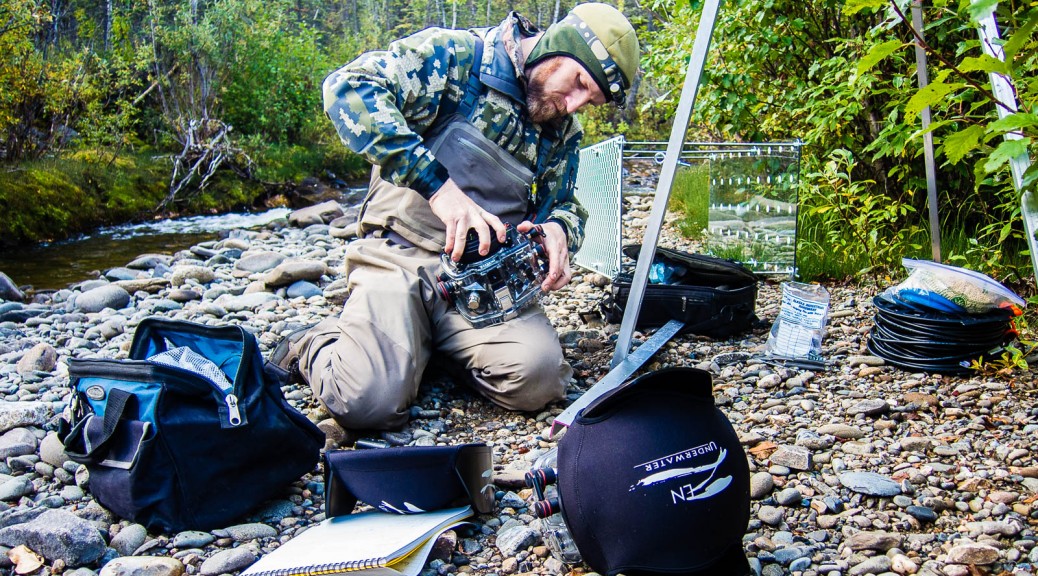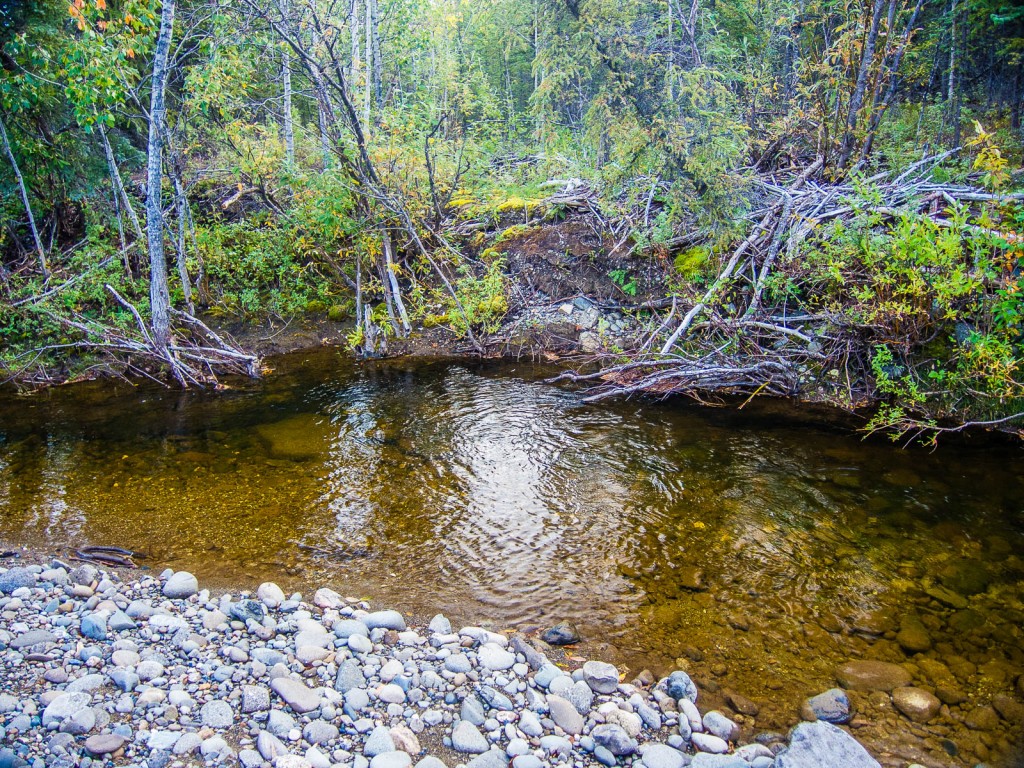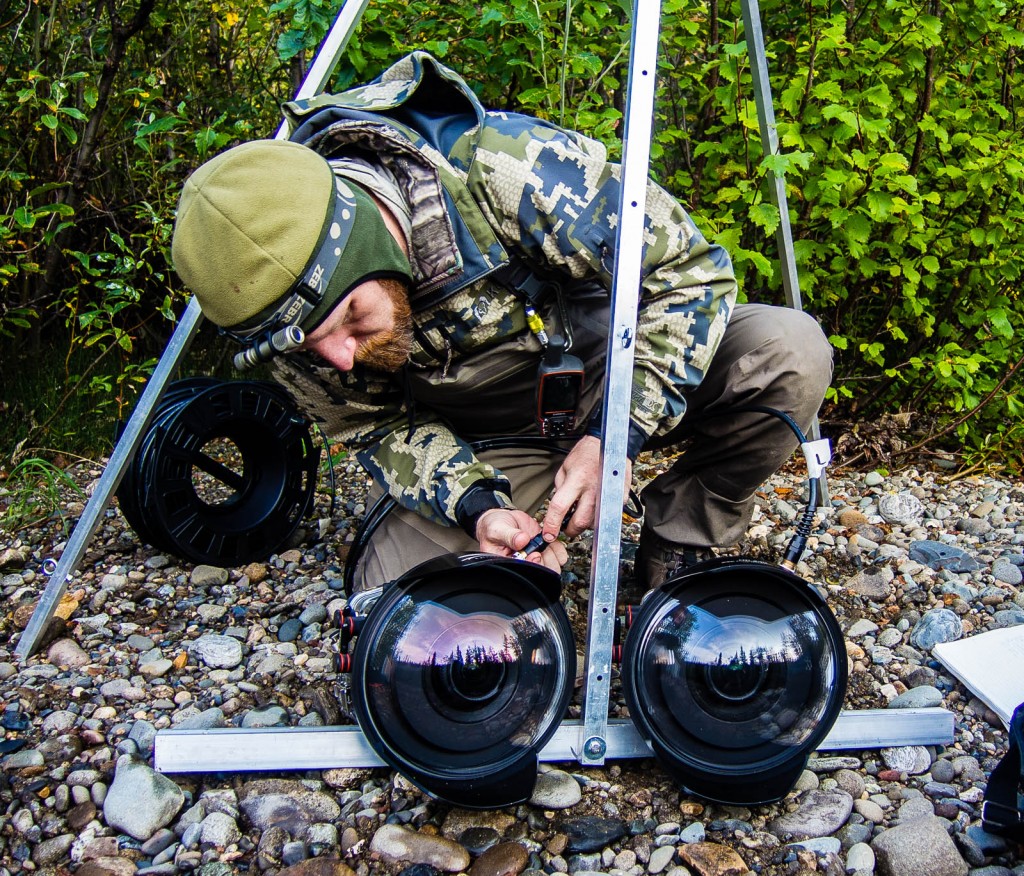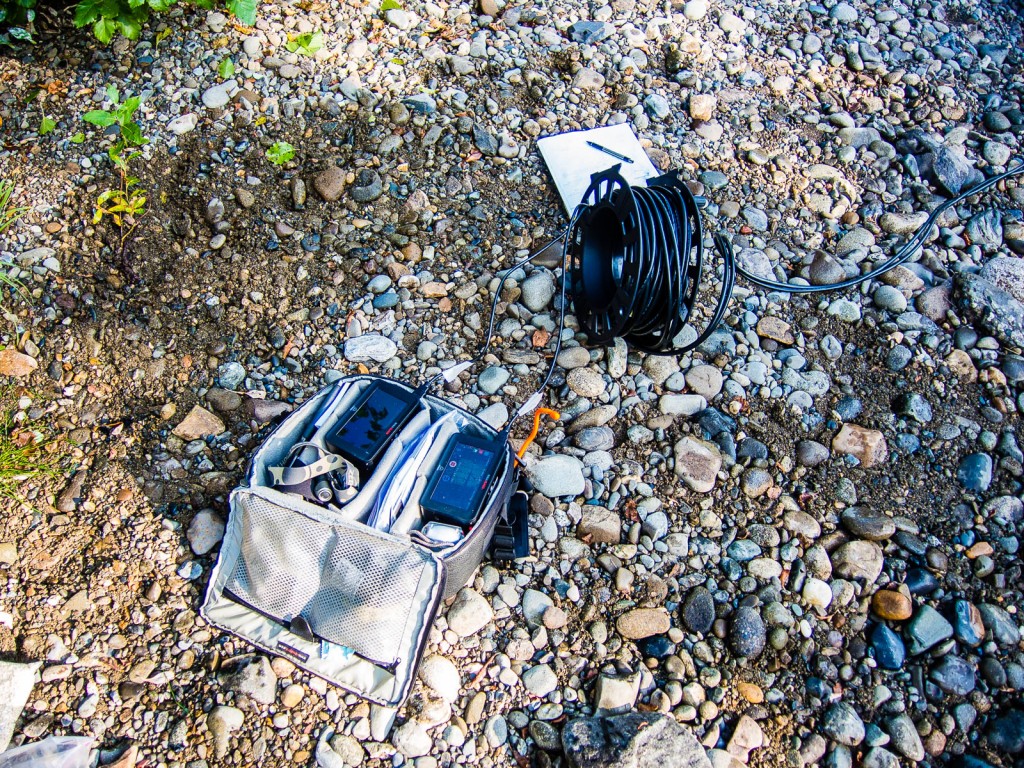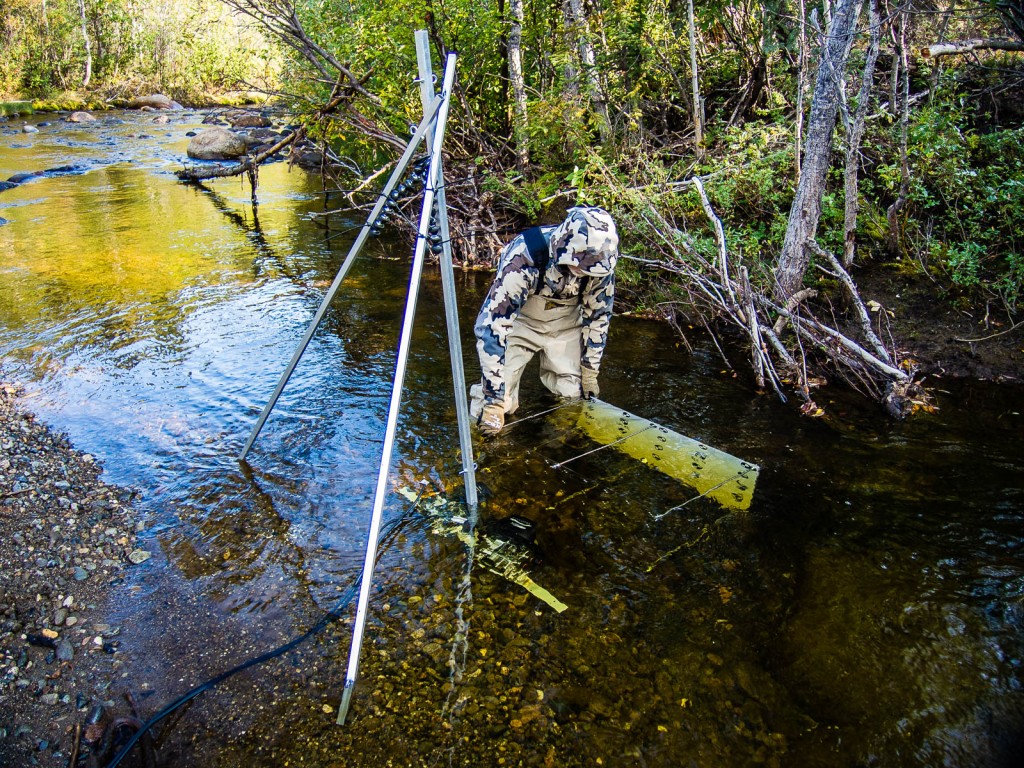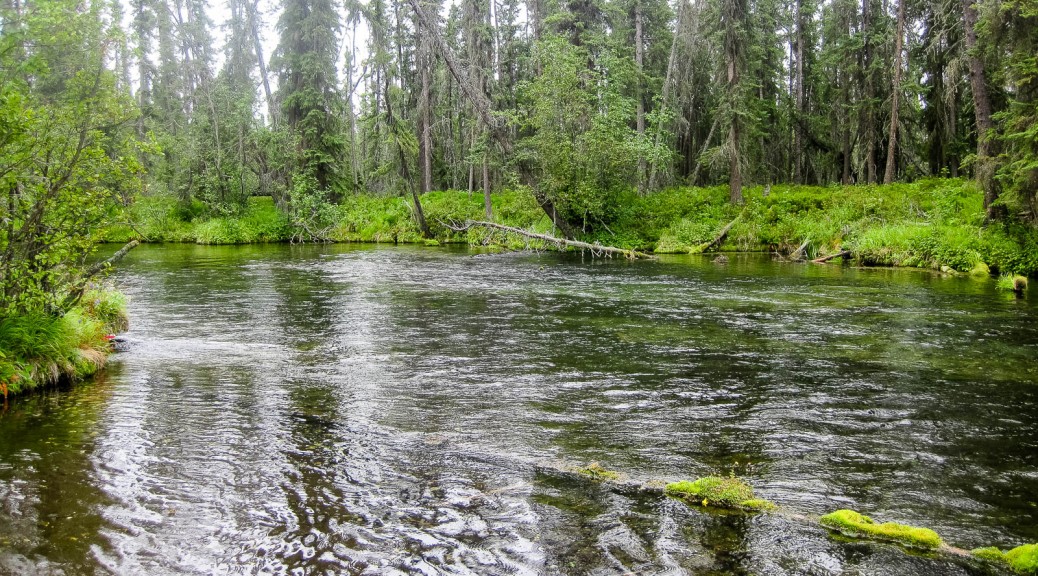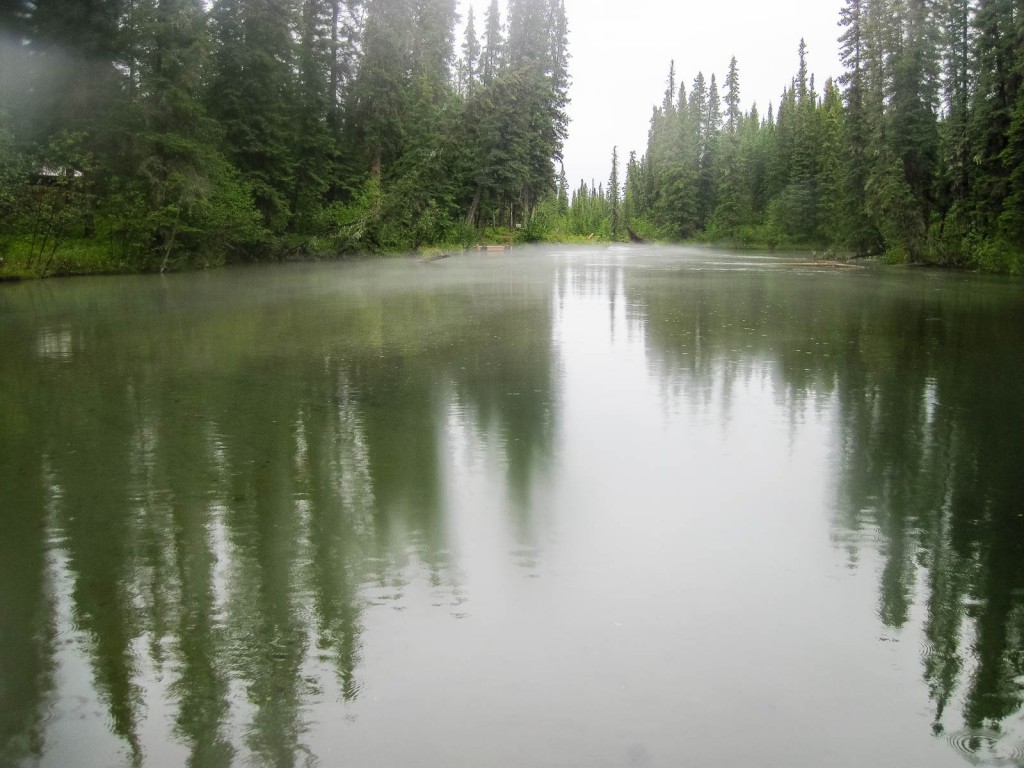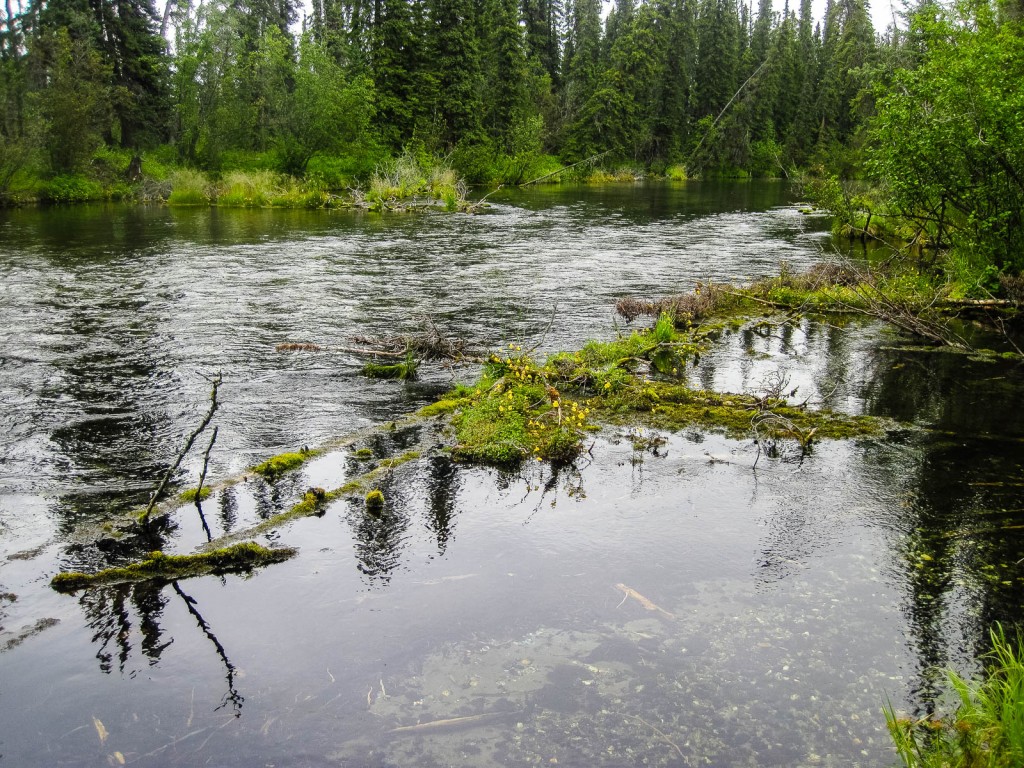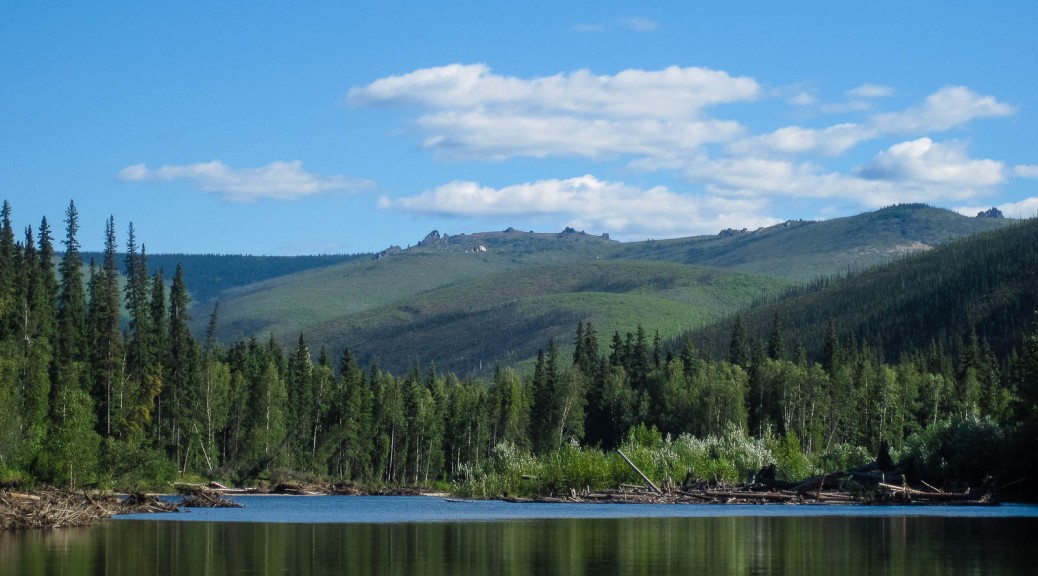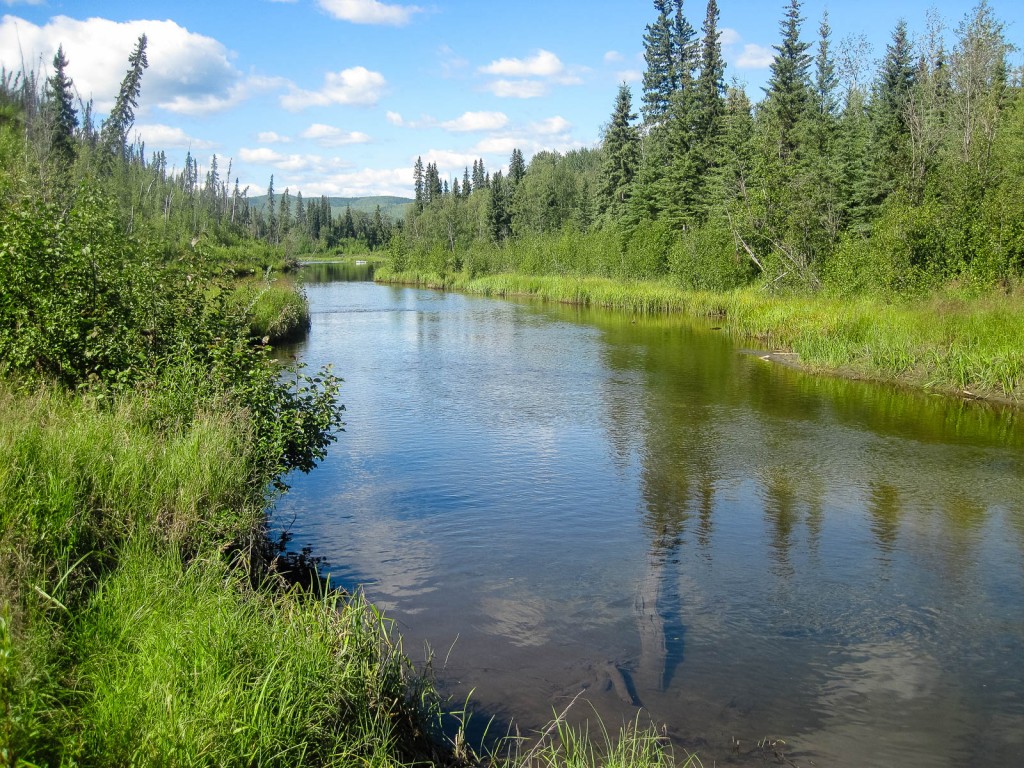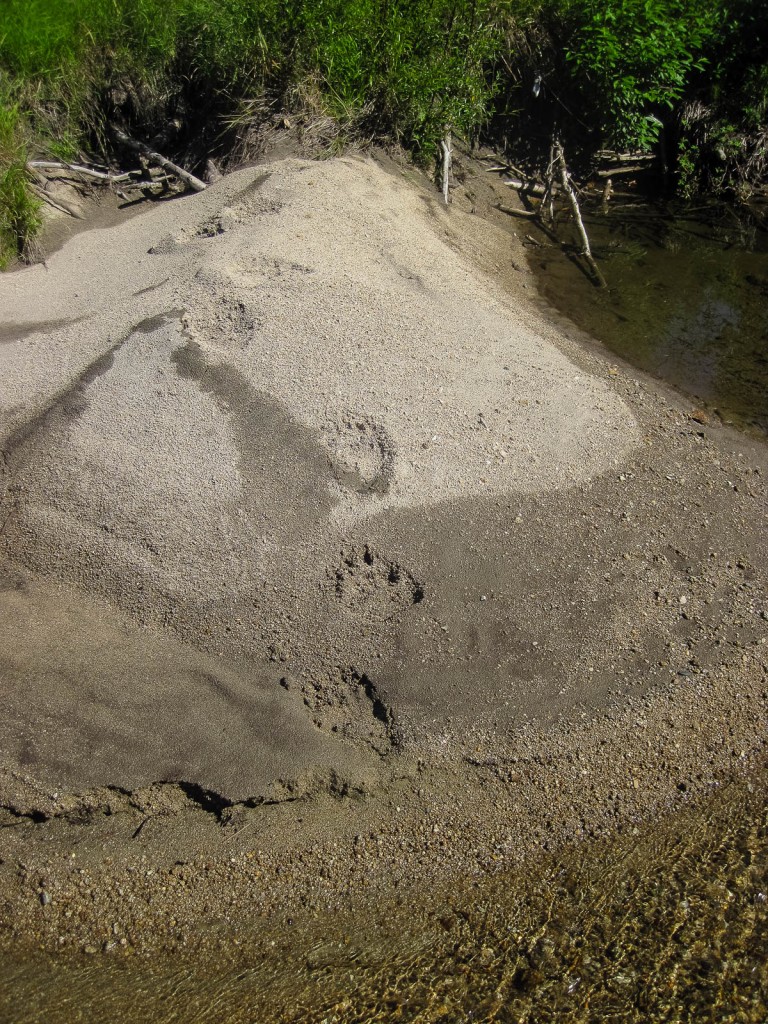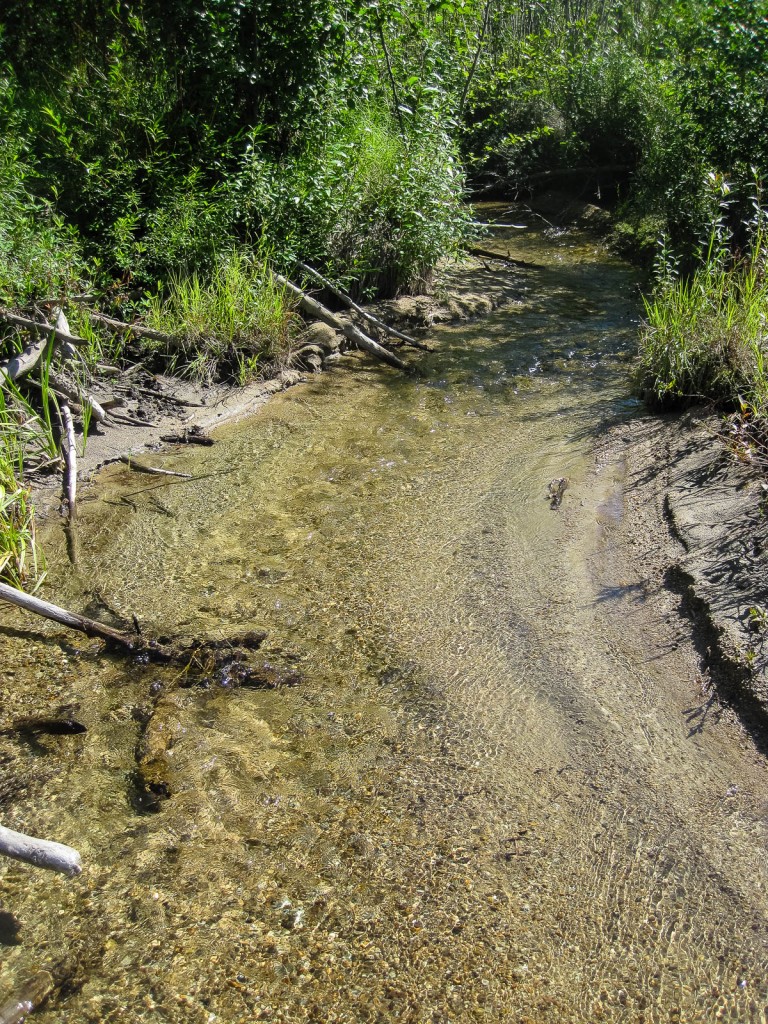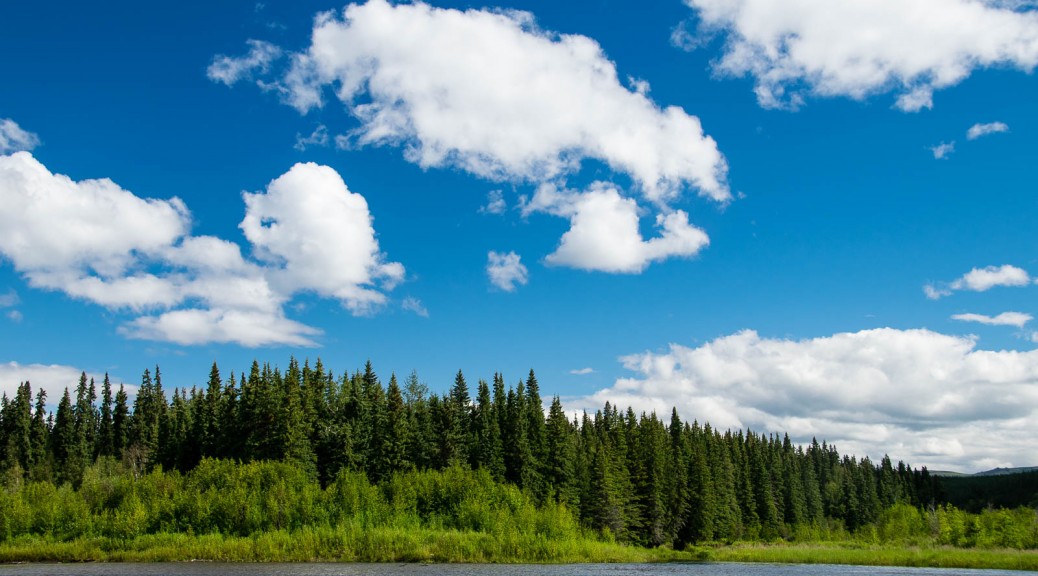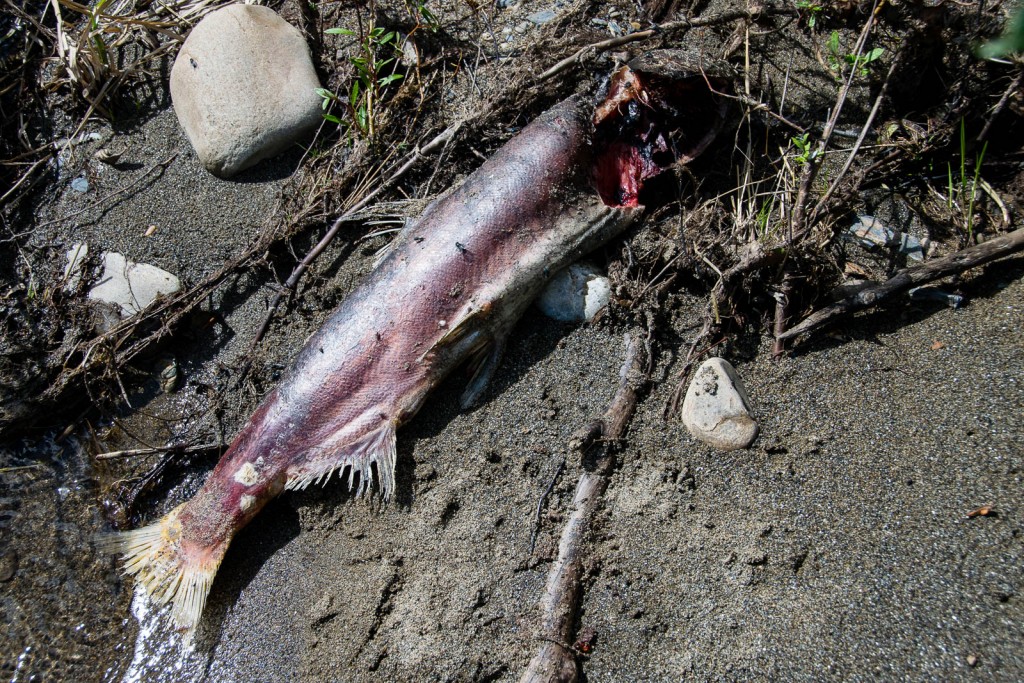August 22, 2014 was a day trip to one of our Chena Chinook study sites to test the second of our two camera systems. Much less complicated than the big Nikons we tested and troubleshot previously, the GoPros were able to shoot pretty good video right away. (My experience filming Chinook salmon also made it easier than testing the big cameras on other fish.)
I had more family visiting and enlisted my father (left) and father-in-law (right) to help assemble the 3-D video calibration frame.
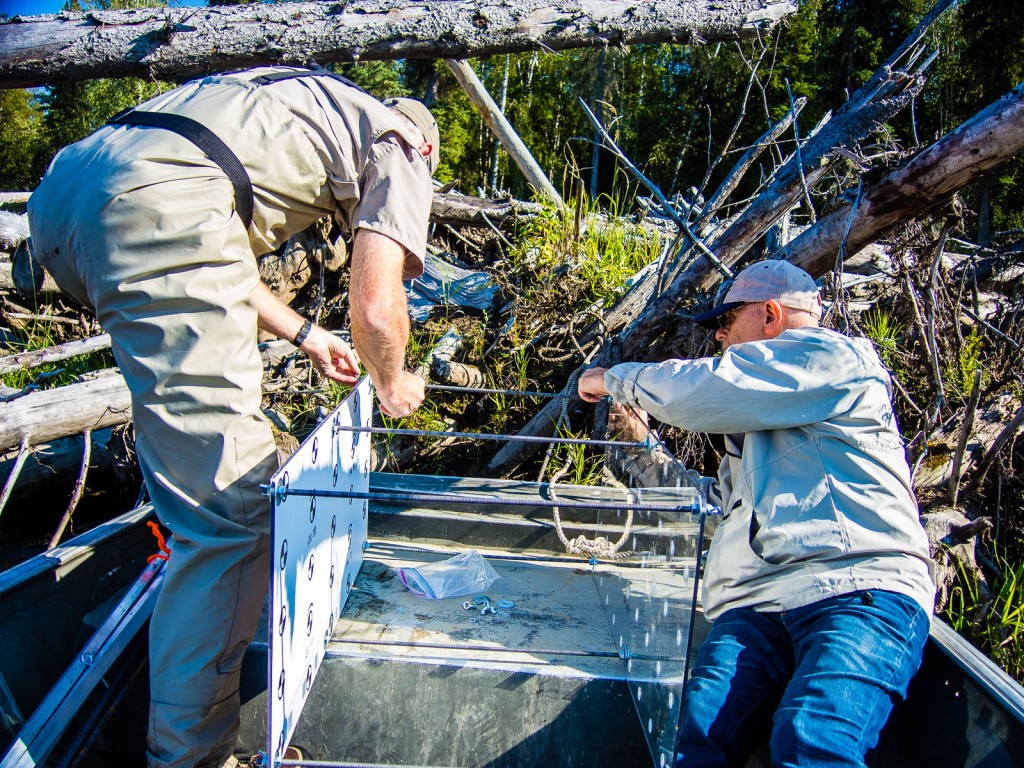 We were also joined by Bill Carter from the U.S. Fish and Wildlife Service, who wanted to learn how to deploy the 3-D video system with GoPros for use on a sheefish project later in the year.
We were also joined by Bill Carter from the U.S. Fish and Wildlife Service, who wanted to learn how to deploy the 3-D video system with GoPros for use on a sheefish project later in the year.
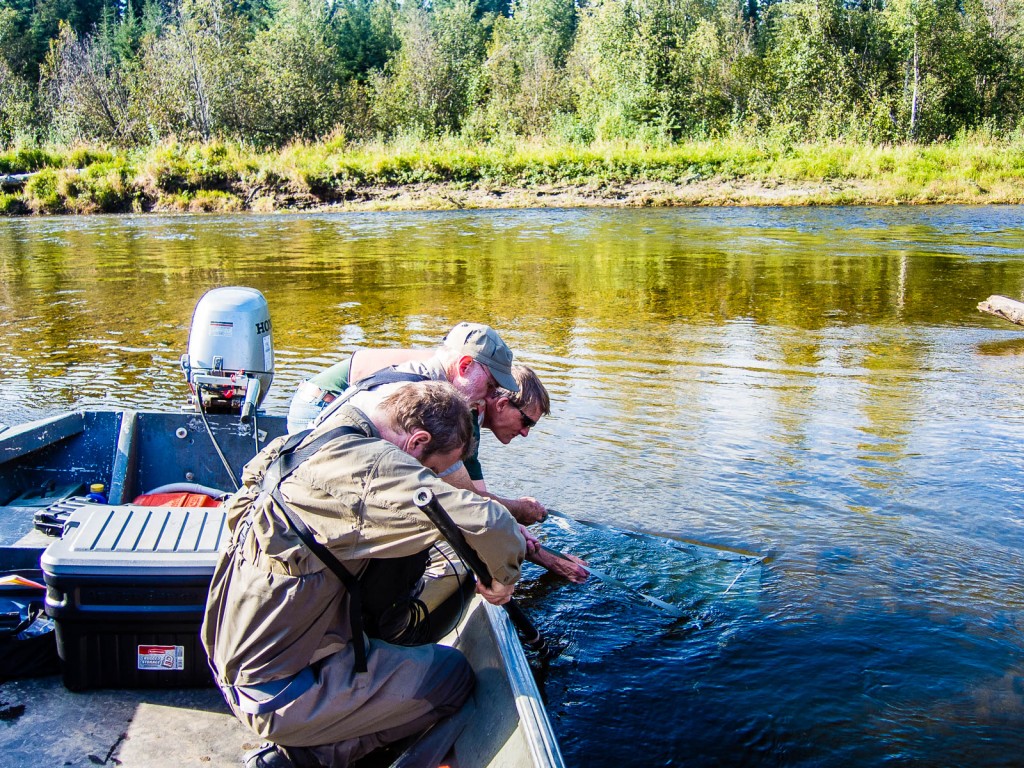 It’s great that we had so much willing help for equipment testing during this pilot field season. Next year, we will have paid technicians.
It’s great that we had so much willing help for equipment testing during this pilot field season. Next year, we will have paid technicians.


